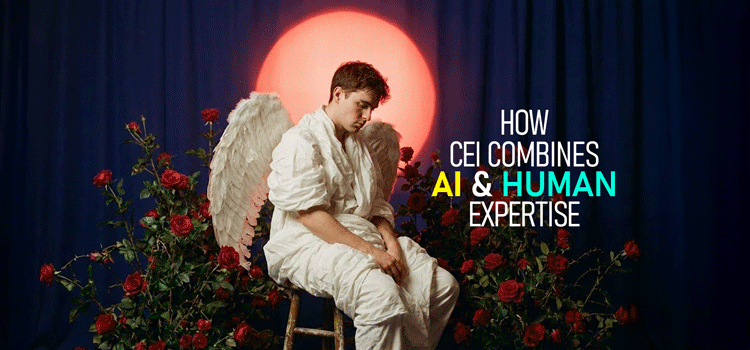What is Photo Editing? A Beginner’s Guide
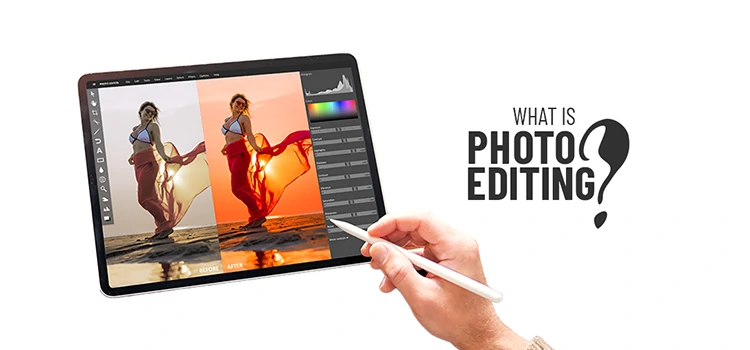
Ever scroll through your camera roll, stop at a photo you love, and think… “If only the lighting were better.”? That’s where photo editing comes in.
It’s not just about fixing mistakes or slapping on a random filter. It’s about making a good shot pop. Sometimes that means boosting colors so they feel alive. Other times, it’s about cleaning up little distractions so your viewer focuses on what matters.
The truth? In today’s visual world, your photos are your handshake. Your business card. Your “Hey, this is me” moment- whether you’re a brand, a creator, or just sharing life with friends. Raw photos rarely tell the whole story. Editing helps you shape that story so it lands exactly how you want it to.
By the end of this post, you’ll see how photo editing matters. You’ll learn how it shapes our view- one tweak, one adjustment, and one great image at a time.
What’s Photo Editing Really About?
Alright, let’s skip the complicated terms. At its core, photo editing is about making a picture better. Seriously, that’s the basic idea. But here’s the catch: “better” is tricky. It really depends on who you ask and why they took the picture.
Think about it. If you’re shooting, say, fancy watches for a catalog? “Better” probably means making every tiny gear look razor-sharp and the colors so spot-on that someone online feels like they could touch the metal. Makes sense, right? You want customers to trust what they see.
Now, flip that. You’re the photographer at a wedding. Is it “better” there? It’s likely much softer. You might give the bride’s skin a flawless yet real glow. You could also warm up the light. This way, the scene feels as cozy and magical as it did when they said “I do.” It’s all about feeling.
And then there’s your friend scrolling Instagram at lunch. For them, “better” means boosting the contrast just enough. This makes their beach pic pop among the sea of sunset photos in their feed. Simple. Stand out. Done.
Editing vs. Retouching vs. Manipulation.
People mash these together all the time, and honestly? They’re cousins, not twins. Let me break it down how I see it:
Photo Editing
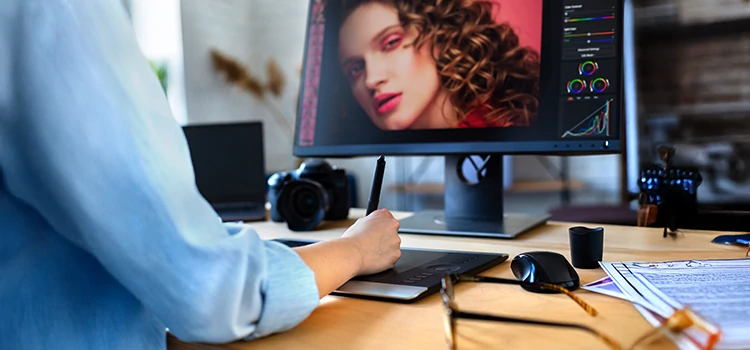
That’s the big picture stuff. The foundation. You’re tweaking the overall exposure – maybe the shot was too dark or too washed out. Fixing the color balance so whites look white, not weirdly yellow.
Cropping it tighter to cut out that random photobomber in the corner. Adjusting contrast, highlights, shadows… You’re shaping the whole image to look its best. Think of it like… Seasoning a meal. You’re bringing out the flavors that are already there.
Retouching
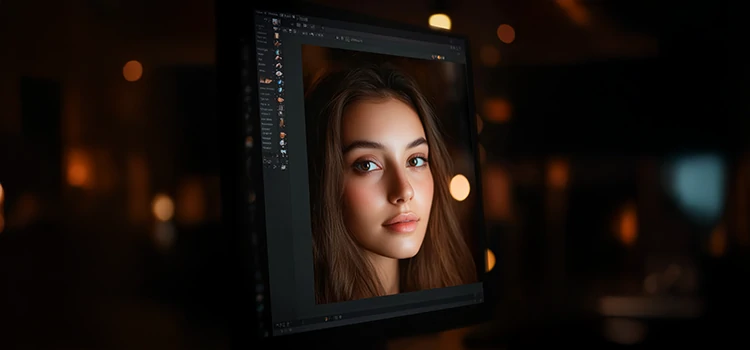
Oh, this is where you get picky. Zoomed in, pixel-level picky. This is the detailed work. Removing that annoying zit that decided to appear exactly on picture day. It’s like… picking the little burnt bits off your otherwise perfect toast. You’re fixing the small imperfections, refining the details. Still working with what’s fundamentally there.
Manipulation
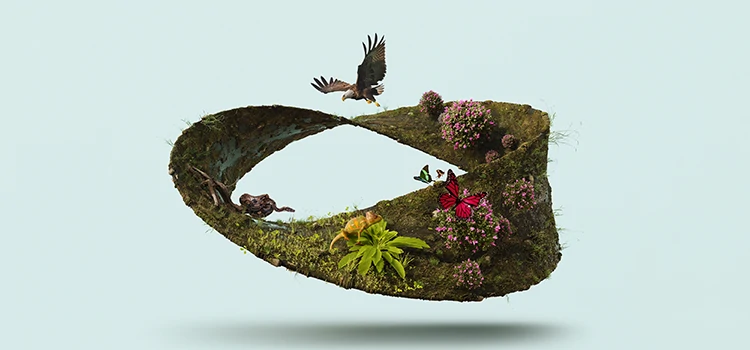
Whoa, Nelly. This is the deep end. This is where you start adding or removing whole things that weren’t in the original shot. Like, putting a majestic lion walking down a city street that was actually empty.
Transforming your backyard into a tropical paradise? A masterful illusion. With a green screen, you can stage your own escape. But this isn’t simply adding spices or salvaging soggy bits. It’s like taking a delicious veggie stir-fry and suddenly declaring it a glamorous rack of lamb.
So Yeah! Editing is the broad strokes, making the whole image sing. Retouching is the fine-tuning, polishing the details. Manipulation is… well, that’s digital alchemy. Changing the game entirely.
Knowing the difference? It just helps you understand what’s actually possible (and ethical!) when you’re trying to make that picture “better.” And honestly?
Figuring out which kind of “better” you need is half the battle. Sometimes it’s just a little crop and contrast boost. Other times… well, sometimes you do need that unicorn.
Evolution of Photo Editing
Photo editing has been around way longer than Instagram filters. Way longer than Photoshop, even. The truth is, people have been tweaking images since the first photographs were developed.
In the golden age of film, editing demanded time in the shadows. Photographers wielded tools and chemicals with finesse, lightening (dodging) and darkening (burning), images like magic. To banish a blemish, they painted over prints with care. No “undo” button existed! Only skill and patience carried the day.
With the dawn of the digital era in the late ‘80s and early ‘90s, the landscape shifted dramatically. Enter Photoshop in 1990- a game changer. Edits that once soaked up hours now zipped by in mere minutes. Designers and photographers eagerly pushed images beyond darkroom limits.
Fast-forward to today, and editing is in everyone’s pocket. You can tweak colors, remove objects, and apply pro-level effects right on your phone. And with AI tools now in the mix, we’re stepping into a world where you can describe what you want. Also, the software does it for you.
From slow chemical processes to instant, AI-powered magic… photo editing has evolved from a niche skill to something almost anyone can do. But the heart of it hasn’t changed. It’s still about taking what the camera sees and shaping it into what you feel.
Why Do We Edit Photos?
Let’s get personal for a second. You take a photo!
Maybe it’s your child laughing, covered in cake at their birthday party. Or that peaceful morning walk with your dog, when the light was soft and everything felt calm. You snap the picture, feeling excited… then you look at it later and think, “Wait… this doesn’t feel like what I remember.”
The colors are off. The sky looks gray instead of glowing. Your child’s eyes aren’t as bright as they were in real life. The moment is there, but the feeling? Missing.
That’s why we edit.
Not because we’re trying to impress anyone. Not because we think the raw photo is “bad.” But editing helps us close the gap between what the camera saw and what we actually felt in that moment.
1. Because Cameras Don’t See Like We Do

Our eyes are magic. They adjust instantly- dim light, bright sun, shadows, highlights. But cameras? They do their best, but they miss things. That golden hour glow? Might come out flat. That candlelit dinner full of warmth? Could look cold and blue. Editing gives us a chance to say, “No, it was like this,” and bring back the light that was really there.
2. To Help People See What We Saw
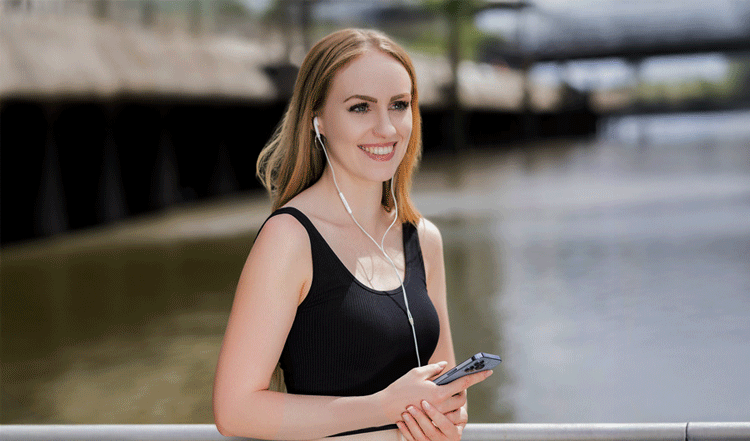
Ever shown someone a photo and heard, “I don’t get it”? That’s not their fault. The story just got lost. Editing helps us direct the eye. Crop to focus on hands. Brighten a face to reveal emotion. Deepen contrast to enhance mood. It’s not about changing the moment. It’s about making sure the moment lands.
3. To Create a Look That Feels Like Us
Consider your favourite photographer, blogger, or friend with a great feed. You likely recognise their photos before seeing their name. Why? They’ve created a vibe- consistent, intentional, theirs. It might be warm and nostalgic, or clean and bright. That’s editing in action. It’s not about following a trend. It’s about expressing, “This is how I see the world,” again and again.
4. To Make People Feel Something
A photo can be technically perfect yet feel empty. Change the tone a bit, like add warmth, cool the shadows, and lift the highlights. Suddenly, it feels peaceful, nostalgic, or powerful. Editing lets us play with emotion, much like music. You don’t just show a scene; you create the mood.
5. To Remove the Noise- Literally and Figuratively
Life rarely unfolds like a flawless studio photo. Hurdles arise: a trash can hides in the corner, a stranger’s shadow creeps by, or a strange reflection appears in the window. Fear not, however; these distractions don’t control the moment. We edit them out, not to mislead, but to focus on what genuinely counts.
6. Because Instagram Isn’t the Same as a Website
Let’s be honest- your photos need to serve different purposes. That stunning landscape may look great on your phone, but it’s too narrow for your blog header. Or you share a portrait on Instagram, and half your face gets cropped out. Editing helps your photos adapt. Crop them correctly, resize, and adjust the brightness for screens.
7. Because Some Moments Only Happen Once
You can’t ask a bride to walk down the aisle again. You can’t tell a toddler, “Hold on, let’s try that first step once more.” Some photos are all we have. If the lighting was harsh or the focus was off, editing helps protect those memories. It’s not about being perfect; it’s about keeping them safe.
Types of Photo Editing
Let’s be honest! Most people don’t open a photo editing app for “luminance curves” or “layer masks.” They do it because they care about the photo. It means something to them. Deep down, they want it to look and feel the way it did when they pressed the shutter.
Editing is not just chasing perfection; it’s about purpose. The reality is, each photo requires a unique touch. Some need a swift polish, while others crave tender care and a sprinkle of enchantment.
1. Basic Adjustments
This is where most editing begins and often ends. It’s the digital version of straightening your collar before walking into a room. You take a photo, and something feels slightly off. The horizon’s crooked. The lighting’s too dark. The colours look cold, as if the moment’s warmth has faded.
So you make small, thoughtful changes:
– Focus on what matters by cropping the image.
– Brighten the shadows to bring out your sister’s smile.
– Adjust the white balance to capture the warm glow of golden hour.
2. Color Correction & Grading
Have you taken an indoor photo where your friend’s face looked yellow? Color correction solves this. It adjusts whites, skin tones, and removes unnatural tints from artificial light.
Color grading evokes emotions. Want a warm, nostalgic feel? Add golden tones. Prefer a modern look? Use cool tones. It’s about mood, not reality.
3. Retouching
Retouching uncovers authentic beauty by subtly erasing dark circles and blemishes and adding a radiant glow to the eyes. It celebrates the subject’s true essence.
Clean dust, remove sensor spots, and smooth fabric wrinkles for product shots. Focus on subtlety, showing the subject exactly as they were.
4. Creative & Artistic Effects
Sometimes, you don’t want to fix a photo. You want to dream with it.
This is where editing becomes art. You step outside realism and start playing. Maybe you blend two photos into a surreal landscape. Maybe you can add light leaks, grain, or textures to make it feel like an old film still. Or turn a portrait into something that looks painted.
Editing of this nature takes on personal flair. It flourishes in fashion, dances through fine art, and weaves its magic in storytelling. Whenever you aim for an image that whispers more than just, “this happened,” you embrace this craft. Here, you’re not merely documenting; you’re breathing life into expression.
5. Photo Restoration
Some photos carry more weight than others.
Imagine your grandparents’ wedding photo- faded, torn, and aged by the years. Or a childhood snapshot, lovingly handed down, now stained and crumbling. These aren’t just pictures; they’re treasured relics of a life well-lived.
Image Restoration is slow, careful work. You remove scratches. Rebuild missing corners. Bring back lost colors. It’s part craft, part heart. And when it’s done, someone might see a face they haven’t seen clearly in decades. That’s not just editing. That’s giving memory a second chance.
6. Composite Editing
Here’s the truth: the perfect shot doesn’t always happen in one click.
The lighting might have been perfect at sunset, but your friend blinked. The background could also be distracting. So, you take the best parts from different photos and blend them into one smooth image.
You might replace a dull sky with a dramatic one. Add someone to a group photo who couldn’t be there. Or create a fantasy scene that never existed but feels real. It takes skill to make it believable. Light has to match. Shadows have to fall the right way. But when it works? No one questions it. They just feel it.
7. Format & Output Editing
Few throw confetti for image resizing. Yet, a blurry photo on Instagram? That’s a silent killer of engagement. An image that loads at a snail’s pace on your site? Just as unwelcome. So, what’s the remedy? Let’s dive into the steps to sharpen your visuals and boost your speed.
– Crop it for the platform.
– Compress the file for speed.
– Ensure it looks sharp, whether on a phone or a poster.
Tools & Software for Photo Editing
Choosing the right editing application can be tough with a number of editing applications available. Now, let’s find out which one is the best for your needs.
1. Powerhouse Professionals
These leading editing tools provide photographers, designers, and retouchers with unmatched editing flexibility.
- Adobe Photoshop – Master of creative retouching, multi-layered composite images, and spectacular visual effects. Every artist’s go-to standard.
- Adobe Lightroom – Your classic photo workflow starts and ends with Lightroom. It offers excellent organisation and batch editing features.
- Capture One – Photographers love its custom colour profiles and easy tethered shooting. They can’t resist using Capture One.
Suggested Article– Capture One vs Lightroom
2. Beginner-Friendly Apps
Boost your photos without needing Photoshop expertise. Simple tools make it easy.
- Canva – Great for quick edits and adding text/graphics for social media.
- Snapseed – A free, powerful mobile app that covers most basic to intermediate edits.
- Fotor – A nice mix of filters, effects, and easy adjustments without the tech overwhelm.
These are perfect if you’re just starting out or want speed over complexity.
3. AI-Powered Editors
New AI technologies let tools change images in seconds. They can replace backgrounds, smooth faces, and fill in gaps. It’s like having a virtual artist at your side.
- Luminar Neo – AI technology help editors perform very complex tasks and with the use of bright presets, AI can greatly enhance images as well.
- bg – A magic wand that vanishes backgrounds from product shots and profiles.
- Adobe Firefly – The creative spark, effortlessly generating content and edits within Adobe’s realm.
Suggested Article– AI-Powered Photo Editing and Manual Photo Editing
4. Free & Open-Source Gems
Not ready to invest in expensive software? There are solid free options too.
- GIMP – Often called the “free Photoshop.” Powerful, but the interface takes getting used to.
- Darktable – An open-source Lightroom alternative for RAW processing.
The Photo Editing Workflow
Photo editing is an art, not just a simple click. A seamless workflow is your paintbrush, keeping you organised and efficient. It saves you time and ensures your results shine consistently.
1. Import and Organize Your Photos
Jumbling all your shots into one chaotic folder? That’s like inviting mayhem. Begin by importing them into your editing software. Then, sort them into neat folders or slick collections. Don’t forget to back them up; your future self will thank you!
2. Cull the Keepers
Separate the victors from the vanquished. Unearth the gems that truly shine. Lean on your instincts to elevate clarity, composition, and emotional weight. The quicker you act, the sooner you’ll ignite true creativity.
3. Start with Basic Adjustments
Lay the groundwork before diving in. Perfect exposure, contrast, and white balance. Master cropping to refine your vision. With these skills, your canvas is ready, primed for photographic brilliance.
4. Move Into Detailed Editing
Now, let’s polish the gem: skin retouching, distraction removal, and vibrant colour grading await. Work in close for precision, then zoom out to gauge the overall vibe.
5. Apply Consistency (Especially for Batches)
When editing a collection- be it a wedding album or product catalogue, maintain harmony. Apply the same style or preset to every image. This unity ensures your work radiates professionalism and visual flair. Cohesion is the secret ingredient for a polished presentation.
6. Export for the Right Purpose
Where’s your photo headed? Social media, print, and websites each have their quirks. Each platform demands specific size, resolution, and format requirements. Tailor your export settings to ensure the photo shines and loads in a flash.
7. Back Up Your Final Work
Don’t let carelessness cloud your creativity. Hard drives can fail, memory cards vanish, and digital clouds don’t always offer shelter. Secure your masterpiece with at least two copies: one safely local, and another in the vastness of off-site storage or the cloud.
The Future of Photo Editing
Photo editing is accelerating rapidly. Advanced editing once meant hours in Photoshop; now AI tools can do it in seconds with a simple description.
AI and Automation Are Taking Center Stage: AI tools are quickly helping with tasks like fixing lighting, removing objects, and replacing backgrounds. This shows how common they are becoming. Soon, the only choice you’ll need to make is what you want.
Real-Time, In-Camera Editing: Clicking the shutter will trigger phones and cameras to send edited photos right away. Imagine capturing a wedding and sharing a complete gallery on the same day.
3D, AR, and Mixed Reality Workflows: The future will expand photo editing beyond ‘flat’ images. Look for tools that blend photos with Augmented Reality. You’ll be able to place your subjects into 3D spaces, making visuals interactive.
Voice- and Gesture-Based Editing: Rather than clicking menus, you might say “make the sky more dramatic” or swipe your hand to brighten shadows. The editing process will become more intuitive, like talking to an assistant instead of operating a machine.
More Accessibility, Less Gatekeeping: Editing that once required years of skill is becoming available to anyone with a phone. This will make creative expression more accessible but also raise the bar because now everyone can make a good-looking photo.
The Human Touch Will Still Matter: Human judgment is essential for editing, as it provides taste, storytelling, and emotion that AI can’t match.
Conclusion: The Art & Science of Perfecting an Image
Photo editing combines science and art. Science is knowing your tools; art is making decisions about what to enhance and how to make the image feel right. The camera captures a moment, editing shapes its memory. It can be subtle or a complete transformation, as long as it serves the photo’s purpose.
Technology turbocharges editing, making it swift and accessible. But remember, it’s the editor who wields the true power. Attention to detail is their art, grasping the heartbeat of the story. They enhance images, all while protecting their soul.
Editing is more than refining. It’s a creative process that reveals a photo’s true beauty, making the ordinary remarkable.



